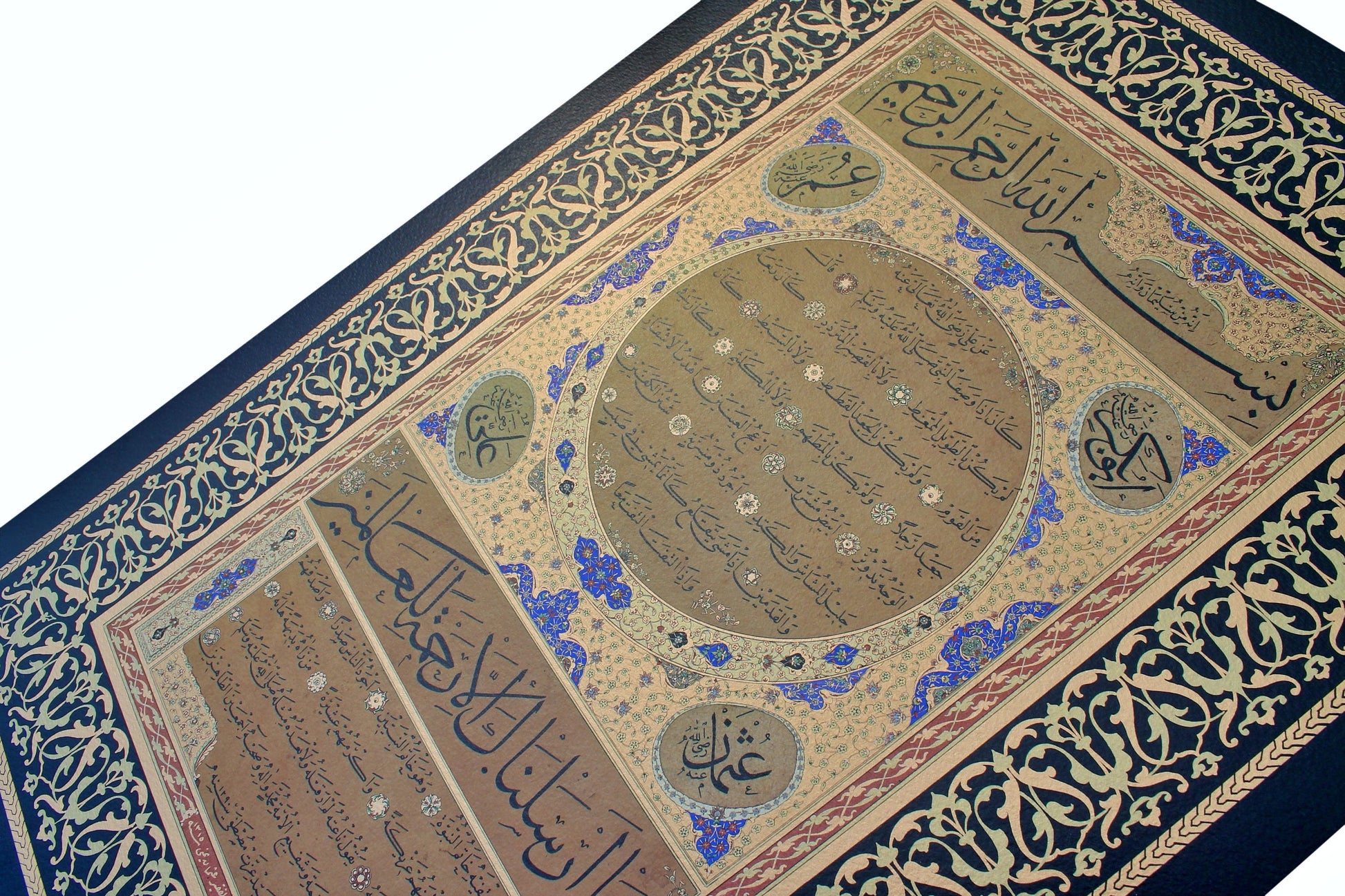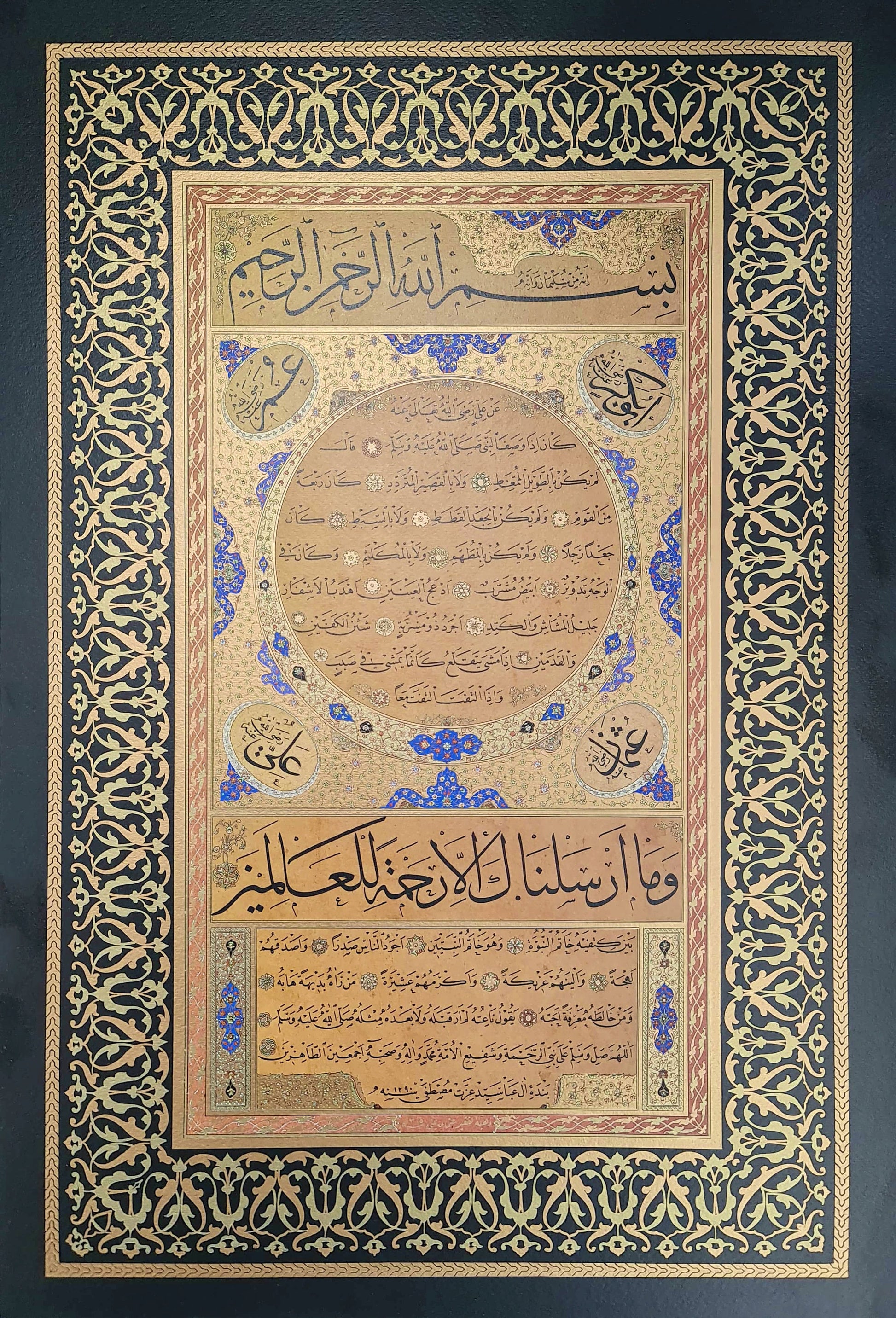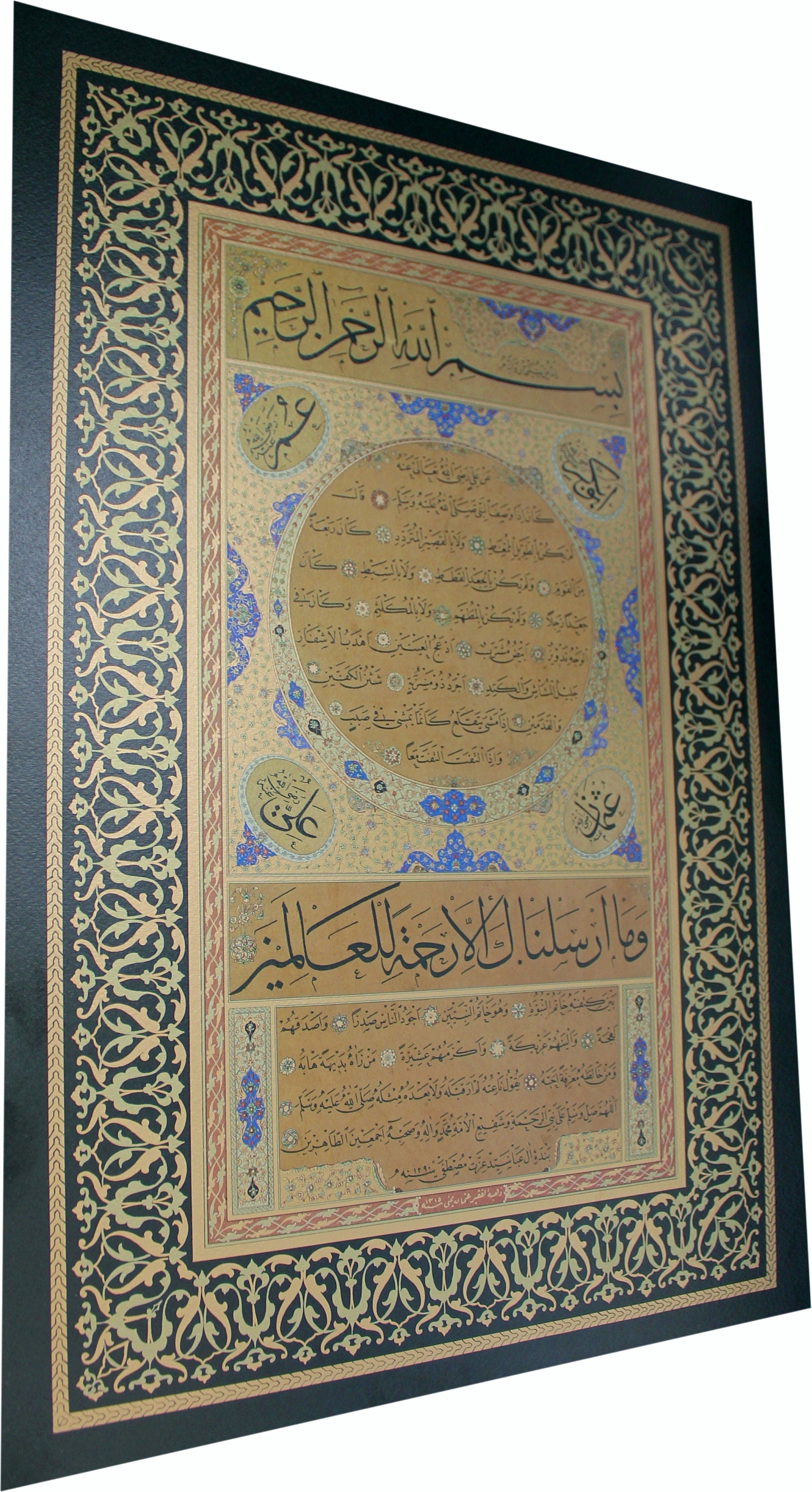sabilarthouse
Limited edition reproduction Ottoman Hilya produced by Kazasker Mustafa İzzet | Verbal portrait of Prophet Muhammad ﷺ | Islamic wall art
Limited edition reproduction Ottoman Hilya produced by Kazasker Mustafa İzzet | Verbal portrait of Prophet Muhammad ﷺ | Islamic wall art
Couldn't load pickup availability
This stunning quality lithographic print reproduces a remarkable Ottoman-era hilye (verbal description) of the Prophet Muhammad ﷺ. The original piece was composed in elegant naskh script by the master calligrapher Kazasker Mustafa İzzet (1801-1876) in 1290 AH (1873-74 CE).
At the head of the work is the basmala, which has meaningfully been written as part of the only verse in which it appears in the Quran aside from surat al-Fatiha (Verse 30 of al-Naml).
The large, central roundel below contains a hadith from the collection of Imam al-Tirmidhi that has been narrated from Imam 'Ali (may God be pleased with him). The hadith describes the physical qualities of the Prophet as well as his noble characteristics:
[Narrated] from Ali, may God honour him, when he described the Prophet (ﷺ) he said: He was neither very tall nor excessively short, but was a man of medium size. He had neither very curly nor flowing hair but a mixture of the two. He did not have a large body. He did not have a very round face, but it was so to some extent. His complexion was reddish-white. He had wide black eyes and long eyelashes. He had large joints and the portion between the two shoulders was broad. He was not hairy but had some hair running from the chest to the navel. He had thick palms and feet. When he walked he raised his feet as though he were walking on a slope. When he turned round he turned completely. [Break in text, which continues below verse 21:107] Between his shoulders was the seal of prophecy, and he was the seal of the prophets. He was more generous in spirit than anyone else, truer in utterance, gentler in nature and nobler by tribe. Those who saw him suddenly stood in awe of him, and those who shared his acquaintanceship loved him. Those who described him said they had never seen anyone like him before or since [Adapted from the translation of Tim Stanley in 'From text to art form in the Ottoman hilye].
Surrounding this larger roundel are four smaller roundels carrying the names of the four Rightly-Guided caliphs (Abu Bakr, ʿUmar, ʿUthman, and ʿAli), which feature in the four corners around the center.
Below this is verse 21:107 of the Qur'an, 'It was only as a mercy that We sent you [Prophet] to all people.' The hilye also includes the calligrapher's prayer: 'O Allah, send Peace and Blessings upon the Prophet of mercy and intercessor of the ummah, Muhammad, and the entirety of his pure family and companions.' This is followed by his signature on the final line of the peice: 'bende-i Âl-i Abâ Seyyid İzzet Mustafa, year 1290'.
===============
Limited edition high-quality lithograph print (300 copies)
Size: 630 x 412 mm.
Calligrapher: Kazasker Mustafa İzzet
===============
*This item does not include a frame. For advice on framing, please contact us.


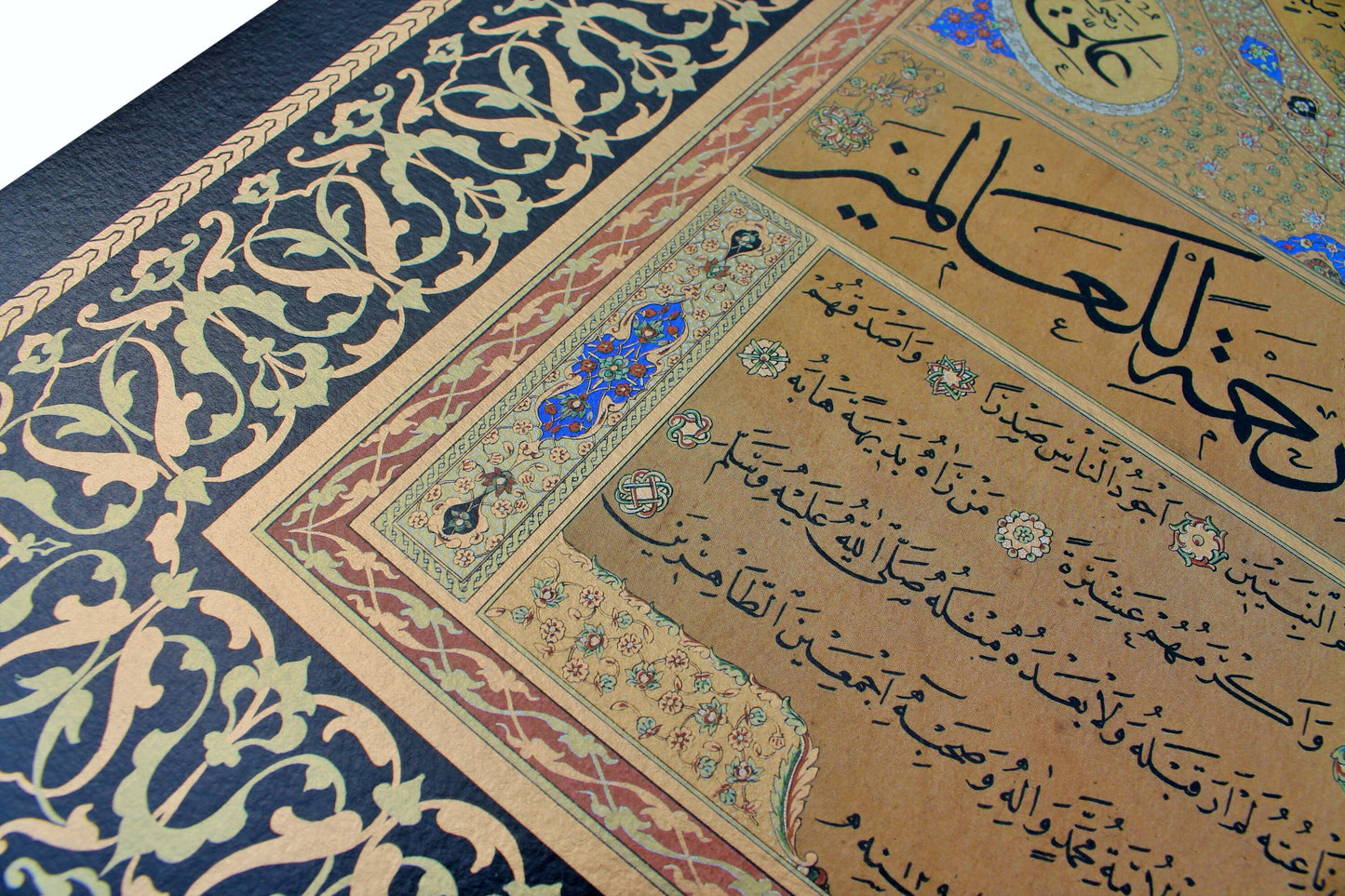
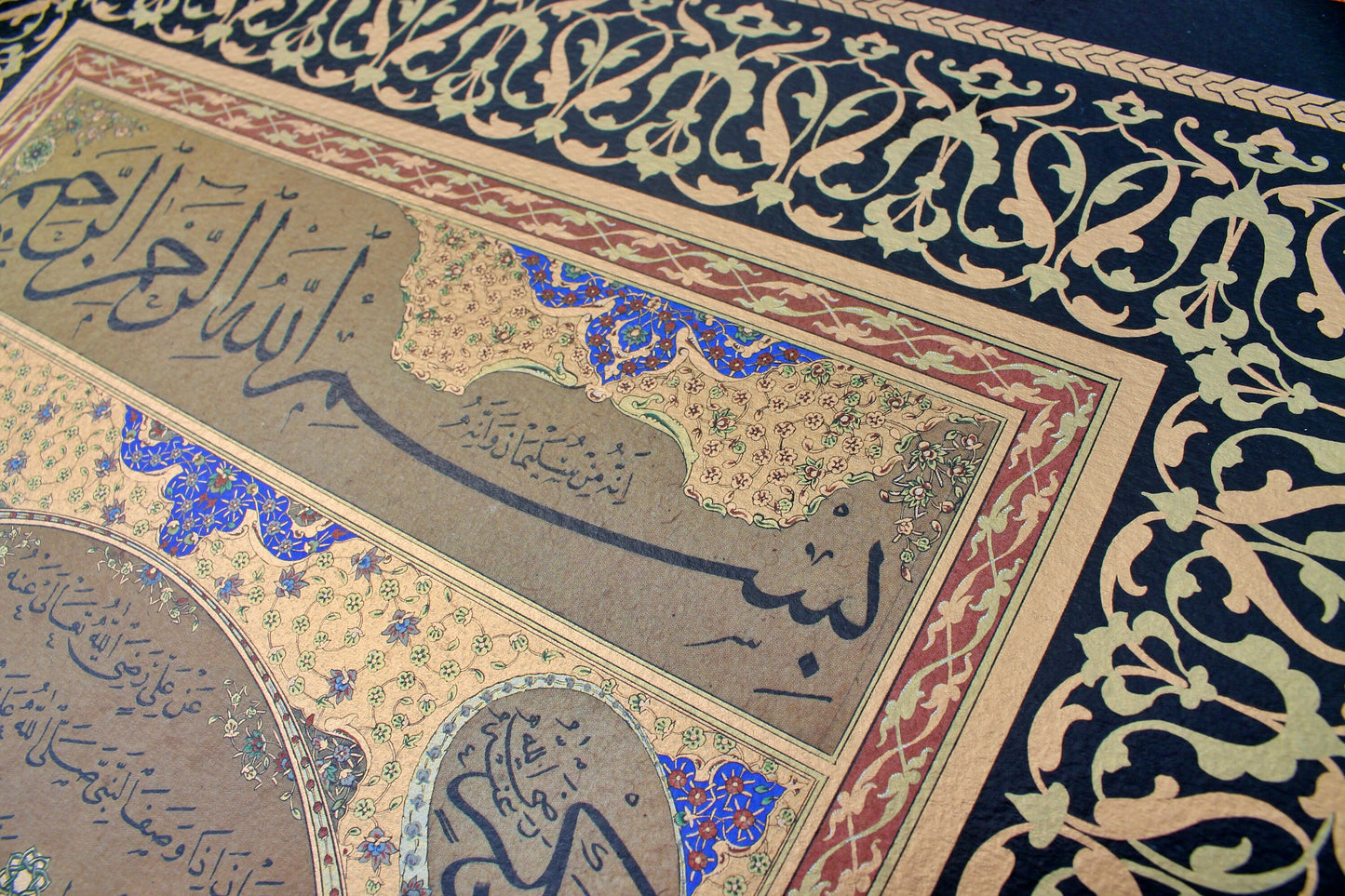
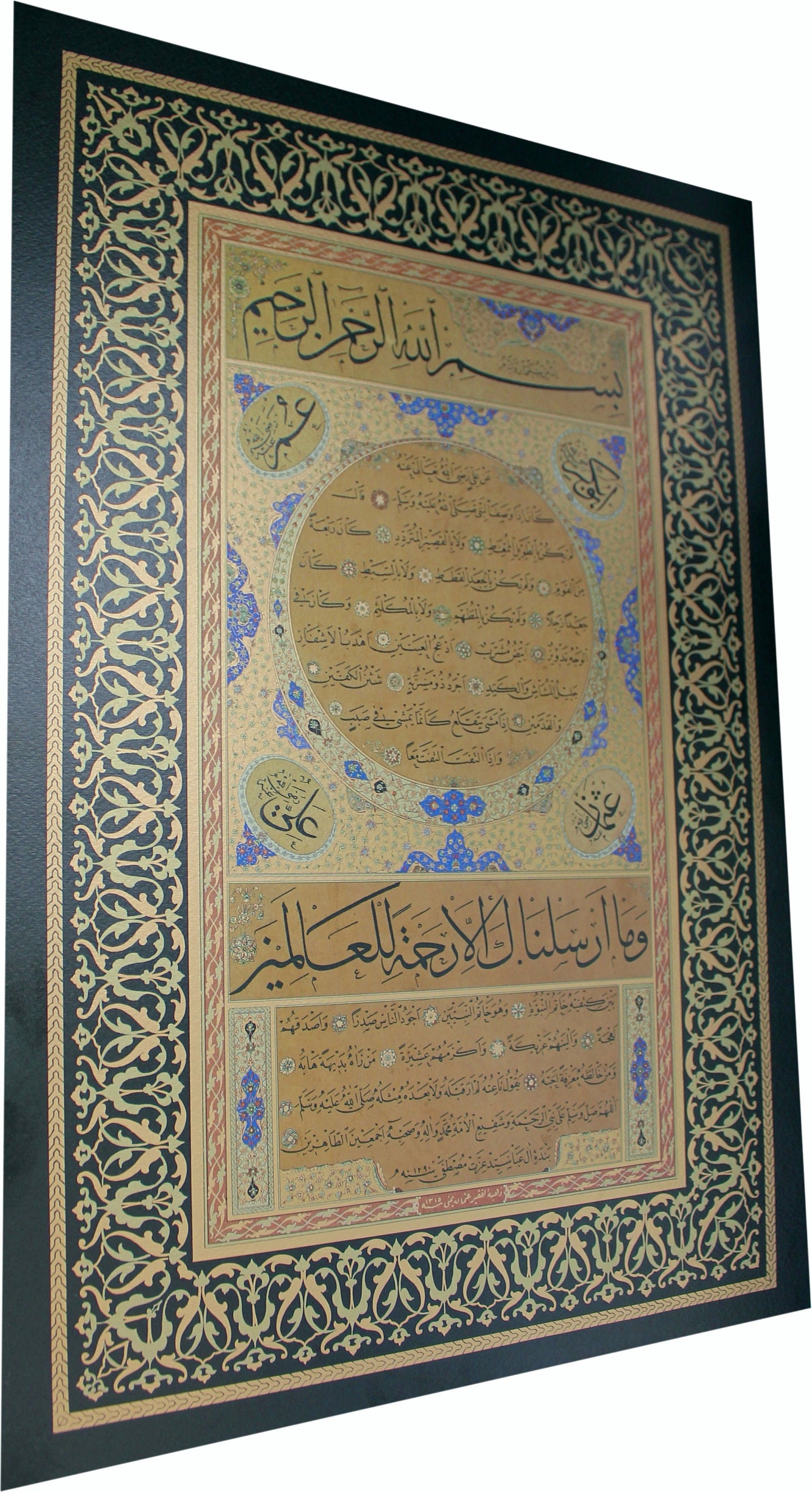
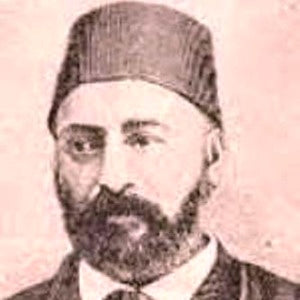
Kazasker Mustafa İzzet
Kazasker Mustafa İzzet was one of the most prominent Ottoman calligraphers and musicians in the 19th century. He was born in 1801 in Tosya, a town in the Kastamonu, Turkey. He became an orphan at a young age, and was sent by his mother to Istanbul for his education. As a young boy of 13 years, he came to the attention of Sultan Mahmud II when he recited a na't in praise of the Prophet in his presence. From then on, he was afforded a rigorous education, and was eventually transferred to the Palace at Galata. Here, he continued to take lessons in calligraphy and music. He received authorisation in sülüs, nesih, and rika, and was given the nickname of İzzetî. He was accepted to the Imperial Court (Enderûn-ı Hümâyun) in 1820, serving as the head caller to prayer (sermuezzin). In 1831, he went on a pilgrimage with his mentor, the Nakşibendî sheikh Ali Efendi of Kayseri, and his teacher, Kömürcüzâde Hafız Mehmed Efendi. After performing the pilgrimage, he stayed in Mecca for a while and also stayed in Egypt for seven months. When he came to Istanbul, he began to live a mystic life away from the palace. When Abdülmecid became sultan in 1839, he appointed Mustafa İzzet as orator of Eyüp Sultan Mosque, and at the beginning of 1845, promoted him to second imam. In 1849, he was appointed as the first imam of the sultan. Upon the death of his teacher, Yesârîzâde, in 1849, he bought a mansion in Bebek and started to reside there. After serving in several important government positions, he died on November 15 1876, and was buried in the graveyard of the Kadirîhâne Lodge in Tophane.
A history of the Ottoman Hilye
Initially, the word ‘hilya’ (Turkish: Hilye) referred to the various hadith which describe the beautiful physical appearance and moral character of the Prophet Muhammad. Many of these are found in the ‘Kitab al-Shama’il’ of Imam al-Tirmidhi (died 279 AH/ 892 CE), which was the earliest collection of its kind.
The first person to present the hilye as a calligraphic art form was the Ottoman master calligrapher Hafiz Osman in the later 17th century. He based his work on a famous hadith from the Shama’il. The earliest examples of calligraphic hilyes all carry the name of Hafiz Osman, and together, they show that by the end of the 17th century, Ottoman Muslims had begun to hang verbal portraits of the Prophet Muhammad on their walls. These descriptions were often combined with verses from the Noble Quran.
The basmala at the top of the hilye indicates the position of God above all things. Beneath this is a large rectangular zone (a large roundel surrounded by smaller roundels) which describes the Prophet and mentions the names of those closest to him in rank. The placement of the Rightly-Guided caliphs (and occasionally Hasan and Husayn and/or the Asharat al-Mubashshara) in smaller roundels parallels the monumental wooden panels that were erected in major Ottoman mosques, perhaps most famously the mosque of the Hagia Sophia.
The Prophet's own description in a large circular roundel invokes the similarly shaped sun and moon; the rising sun and the new moon are fitting similes for the Prophet’s beauty. Following this is a third section, featuring a verse from the Quran which refers to the Prophet as God's messenger to all people. Thus the middle section (between the basmala and the verse) can be seen as a zone intermediate between God and humanity, which befits the Prophet’s station as a messenger sent by God and an intercessor on behalf of his umma.
The final elements in the layout of the hilye usually identify the name of the scribe and the date of completion, which is the lowest position on the panel, and which well represents the humility of the calligrapher, who often identifies himself as al-faqir, one who is poor and destitute, and beseeches God to forgive his sins.

